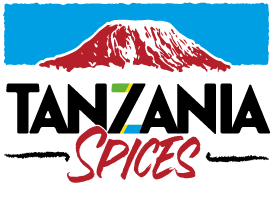The spice islands of Tanzania
Spices were brought to Tanzania and the rich, fertile soils of Zanzibar a thousand years ago. They have been a core part of its people, history and economy ever since.
In the 8th century, Persian traders reached East Africa, building stone settlements for the first time on Zanzibar. They also brought Islam to the region and in 1107AD, the first mosque in the southern hemisphere was built on Unguja island.
The Persians favoured coastal regions with their protected harbours for trading, over the African interior. They began exporting products such as gold, tortoiseshell, rhino horn and ivory.
They also found that Tanzania’s tropical climate and rich soils were perfect for growing a range of spices, including cloves, nutmeg and cinnamon. Later, the Portuguese and Chinese introduced garlic, cacao and chilli.
The spice islands of Zanzibar
Over the years, spice production increased, elevating the colonial importance of the ‘spice islands’ of Zanzibar, and Tanganyika [mainland Tanzania] by extension. They had become part of the all-important and highly contested spice trade.
The spice trade was essentially the beginning of globalization. Spices were considered one of the world’s most prized commodities, even rivalling gold. Spices were used in a range of daily and luxury products, from perfumes and incense, to curing and preserving fresh meat, and in cooking.
Spices were a mark of power, wealth and privilege, and demand quickly outstripped supply.
The flourishing spice trade
From the 12th to 15th centuries, the spice trade flourished across Arabia, Persia, Zanzibar and Tanganyika. These areas became the primary trade location for gold, ivory, slaves and spices. Those controlling the trade and production grew immensely wealthy and powerful.
At the end of the 15th century, Portuguese explorer Vaso da Gama visited Zanzibar, on the lookout for cheap and plentiful spice production. He brought tales of Zanzibar’s spice farming potential back to Europe.
The Portuguese conquered Zanzibar soon after and the spice islands became part of their empire for almost 200 years. Famous for their stone constructions, the Portuguese built forts against the Arabs on Unguja and Pemba islands.
In 1698, the Portuguese were expelled by the Omanis, and Zanzibar became part of the Sultanate of Oman.
Zanzibar cloves
The spice trade flourished once more on the spice islands with a focus on cloves. Large-scale clove plantations were established across Zanzibar. The island’s indigenous African population were enslaved and used to provide free labour on the plantations.
In 1840, the Sultan of Oman, Seyyid Said, decided to move the capital of his empire to Zanzibar.
He established clove plantations across the archipelago, particularly on the islands of Pemba and Unguja. The archipelago became the world's single largest clove producer.
Expanded spice production on mainland Tanzania
The slave trade in Zanzibar brought great wealth, at the expense of human misery. In the early 1820s, the British began negotiations with Oman to end the global slave trade. It was eventually abolished in 1876 and in 1890, Zanzibar became a British Protectorate.
In 1963, the Zanzibar Revolution established the archipelago as an independent republic, which later, in 1964, formed a union with Tanganyika. Today the spice islands are a semi-autonomous part of United Republic of Tanzania (URT).
By this time, the cultivation of spices had been expanded and developed across mainland Tanzania. They were important cash crops and played a major role in the economy.
The Eastern Arc Mountains and Coastal Forests
Thanks to Tanzania’s excellent agricultural climate and soil conditions, a wide range of spices and aromatic plants continue to be cultivated today.
The major production area on the mainland is the Eastern Arc, a chain of mountains running north to south along the coast. The Eastern Arc has both highland and lowland areas with their own distinct microclimates. The air is cool and humid with regular rainfall, natural forests and rich biodiversity.
Between 1995 and 1999, Tanzania ranked third among the Least Developed Countries (LDCs) and exported around 5% of LDCs’ total spice exports.
At that time, marketing and export was managed by a governmental organization, the General Agricultural Foods Exporting Company. The company was dissolved in 2000 and since then, the private sector has managed this role.





